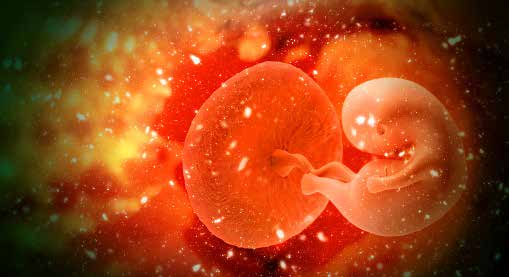


The placenta passes nutrients and removes wastes between mother and foetus and is considered to be a safety barrier between unborn child and the outside world. So it’s deeply disturbing to realise that harmful substances can pass through this safety barrier, including air pollution and micro particles shed by everyday items like plastic containers and bottle, and toiletries.
It’s been proven that particles found in the lungs of pregnant rats can be passed across the placenta to key foetal organs – micro plastics were found in brains, hearts, and other key organs. Even more worryingly, only 24 hours after exposure, foetal weight was on average 7% lower and placental weight 8% lower in a study by Fournier et al in 2020.
A ground breaking study by Ragusa et al reported microplastic particles present in human placenta for the first time. The scientists analysed small areas of six placentas donated by women after giving birth using advanced microscopic technology, and they were able to identify 12 microscopic fragments, small enough
to be transmitted via the bloodstream in four of the placentas.
All of the 12 fragments identified were pigmented; three showed traces of polypropylene (PP) and nine had pigments used in manufactured coatings of everyday items including paints, adhesives, plasters, finger paints, polymers, cosmetics, and personal care products.


What is the impact of this disturbing information, is it proof that microplastics and other everyday chemicals with endocrine disrupting properties can pass across the placenta from mother to child? Yes.
Is it proof that these microparticles are harming the unborn child? Not quite – we don’t fully understand the health impacts yet, or how the body manages
this exposure to EDCs, but the evidence is pointing towards health impacts revealed in later life, especially at puberty.
To read more about how EDCs could be impacting on childhood sexual development and adult fertility rates please, visit our section on EDCs and fertility.

It’s beyond doubt that chemicals and air pollution can transfer across the placenta during human and animal pregnancy with outcomes including prematurity and low birth weight. The speed of increases recorded in the population can’t be fully explained by non-genetic factors such as socio-demographics, age, and other exposures such as viruses, but the mechanisms are not yet fully understood.
Maternal exposure to EDCs has also been linked to delayed speech development.
What is the impact of this disturbing information, is it proof that microplastics and other everyday chemicals with endocrine disrupting properties can pass across the placenta from mother to child? Yes.
Is it proof that these microparticles are harming the unborn child? Not quite – we don’t fully understand the health impacts yet, or how the body manages
this exposure to EDCs, but the evidence is pointing towards health impacts revealed in later life, especially at puberty.
To read more about how EDCs could be impacting on childhood sexual development and adult fertility rates please, visit our section on EDCs and fertility.

It’s beyond doubt that chemicals and air pollution can transfer across the placenta during human and animal pregnancy with outcomes including prematurity and low birth weight. The speed of increases recorded in the population can’t be fully explained by non-genetic factors such as socio-demographics, age, and other exposures such as viruses, but the mechanisms are not yet fully understood.
Maternal exposure to EDCs has also been linked to delayed speech development.

The health effects on mother and child of exposure to EDCs are not fully defined, but the evidence on causal links is growing rapidly. Since the 1970’s the use of chemicals in everyday life has grown by 300 times, so more studies now focus on the links between exposure to EDCs during pregnancy and the impact on foetal development of the brain.
During the first 18-20 weeks of pregnancy, regulation of brain development is fully controlled by maternal thyroid hormones transferred via the placenta. Hormones generated by the thyroid play a major role in neurological development, so any endocrine disruption in this natural process could be associated with losses in IQ in later life and an increase in the risk of neurodevelopment diseases.
Demeneix in 2019 linked foetal exposure to EDCs with increases in neurodevelopmental diseases including autism spectrum disorder and ADHD. The study identified that prenatal exposure to thyroid disrupting chemicals, together with iodine deficiency, indicated a ‘strong probability’ of contributing to this increased incidence of neurodevelopmental disease, but could also lead to a loss of IQ.
A scientific review by Street and Bernasconi summarised what’s known so far about exposure to EDC’s during pregnancy and associations between foetal growth rates, thyroid disruption, and neurological disorders in later life. It found compelling evidence to suggest strong links, but also identified that due to the complex nature of these studies it’s not straightforward to demonstrate a precise relationship.
Further evidence from longitudinal studies, with findings that can be replicated, and exploiting new technologies, will surely provide the statistics to prove the damaging effects of EDCs on our health.
One particular phthalate, DEHP has been associated with an increased risk of premature birth in both animal and human studies.
Swan et al in 2015 found links between first trimester exposure to phthalates and adverse male reproductive outcomes.